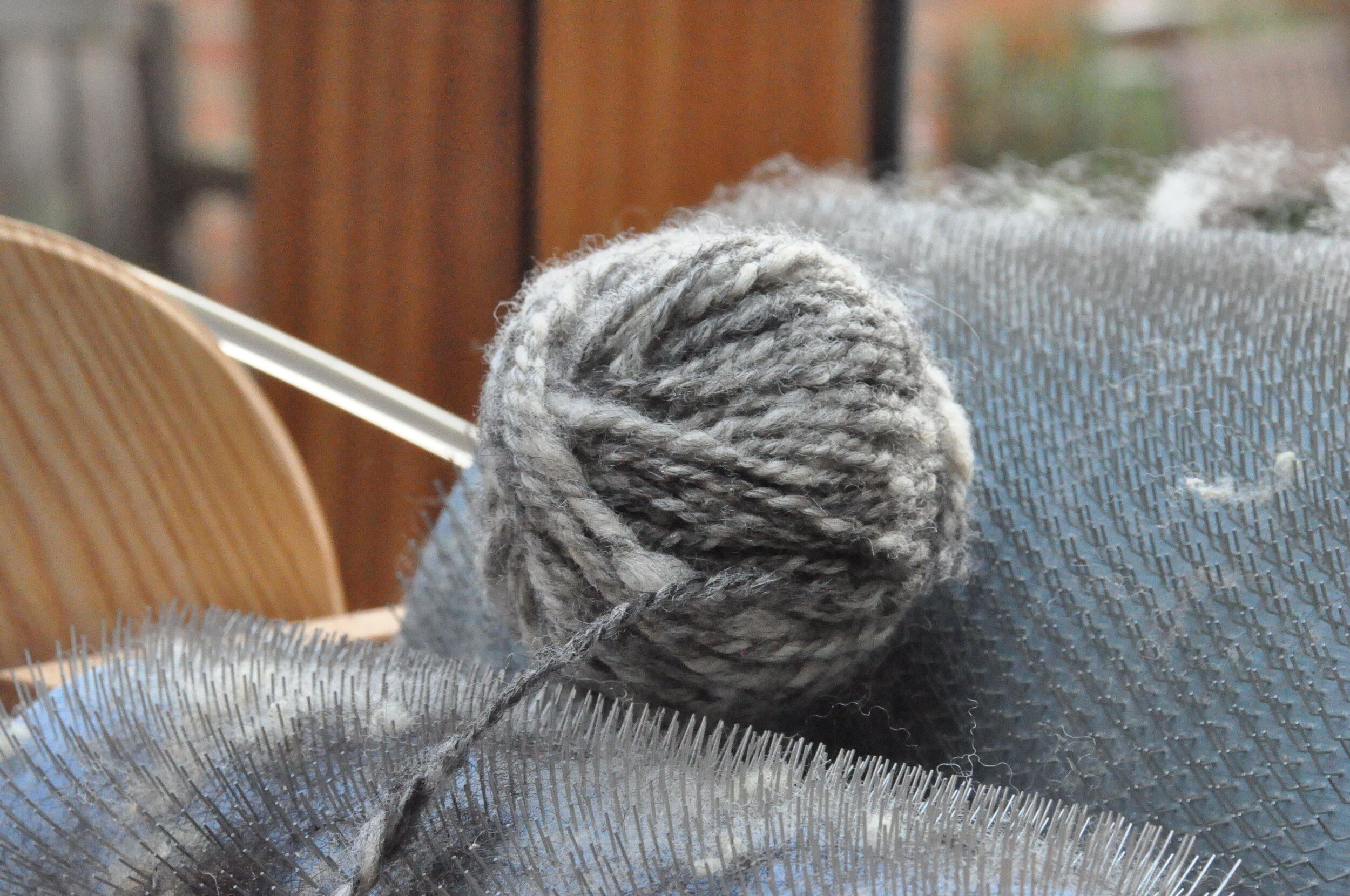
We have designed and modelled our business to ensure our products have as low a carbon footprint as possible.
Our Process:
We are passionate about sustainability, and about doing our bit as a business. As a result, we have designed and modelled our business to ensure our products have as low a carbon footprint as possible.
Chasing the Dawn hats are made with wool that comes from a range of farms, from the Hebridean island of Eigg to the Yorkshire coast. These are fleeces that would often otherwise be discarded, the cost of shearing them more than most farmers can get for selling them on.
The wash.
• Raw wool is washed gently by hand in a warm bath using environmentally friendly soap.
• The wool is then air dried on drying racks either in doors or preferably in the open air (weather permitting)
• The wool is then carded by hand using a drum carder, this part of the process aligns the fibres and prepares the wool for spinning.
The spin.
• The wool is spun on a traditional spinning wheel, ours has a double treadle. Two singles are produced (these are a single piece of yarn) on separate bobbins.
• The two singles are then plied on the spinning wheel, this part of the process produces the double knitting yarn that we use in our hats.
• Once plied the yarn is removed from the bobbin using a Niddy Noddy, this allows us to create a skein. At this point the wool has another light wash which fixes the twist prior to knitting. The skeins are also air dried.
The knit.
• Mistral hats are needed using 100% handspun wool from our local Yorkshire sheep.
• The Mistral range can be hand dyed using natural dyes, or a blend of wool to create different textures and colours.
• Tempest hats are knitted using either 100% Drops Karisma wool, or a blend of Drops Karisma and handspun wool.
• We support local businesses by buying any fairisle wool from local wool shops.
No electricity, all by hand, all unique.
The History Behind Chasing the Dawn hats:
We pride ourselves on using traditional methods to create each Chasing the Dawn hat. With this comes a process steeped in history and learning.
The origins of spinning fibre to make a string or yarn are unknown, but archeological evidence points to the first string skirts being produced around 20,000 years ago.
One of the first forms of known spinning was the drop spindle (A device that was the gateway to ourselves learning to spin, and to Chasing the Dawn hats).
The flyer wheel, the most commonly used (and recognizable) wheel for spinning wool in the UK, took over in the 15th century and is how Chasing the Dawn hats are produced
The earliest evidence of a spinning wheel with a flyer is from 1480. The flyer eliminated the need for the spinner to stop and wind each length of yarn after it was spun, meaning the process became much quicker and more effective.
The flyer wheel and handspun yarn was vital to the success of the textile industries in England and hand spinning of various materials, including wool, flax and cotton, became the principal income generator for women through the 1400s-1800s.
Women could spin as they watched over children and farm animals, making it considerably easier for them to work and produce from home.
It was also a social activity, one that united communities, as neighbours came together to create.
By working in unison, remote communities could produce everything they needed to survive and skills were passed down from generation to generation to ensure a sustainable lifestyle for years to come.
The Drop Spindle
Drop spindles hang from the yarn being spun.
With top-weighted drop spindles, like the ones we use, a hook allows us to hang the spindle from the carded wool. The spindle is then twisted, and released, so it spins at the end of the wool, which in turn creates a tight yarn that can be used to produce clothing.
For thousands of years, most thread was handspun using a drop spindle - including ships sales and cloth.





